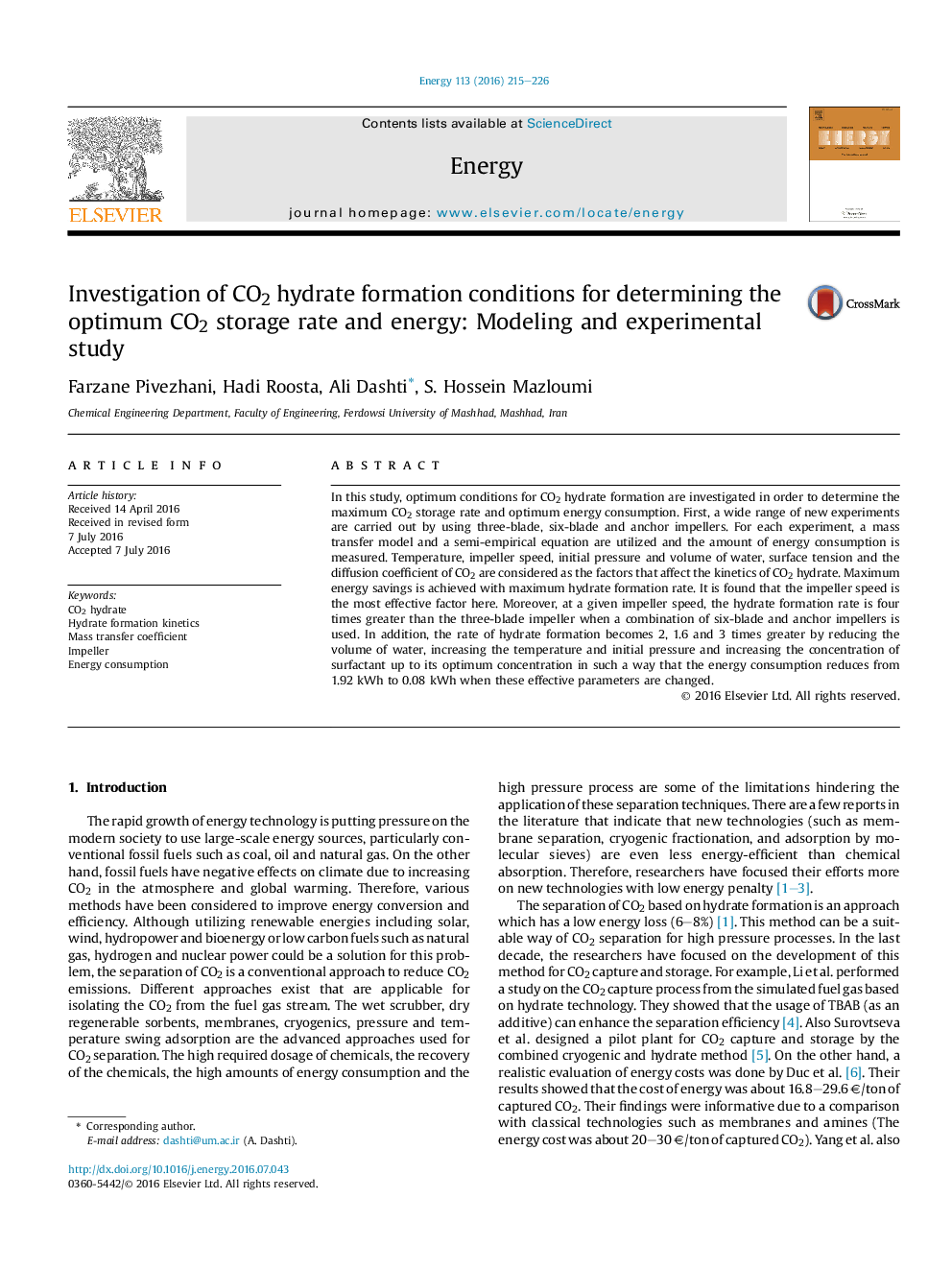| Article ID | Journal | Published Year | Pages | File Type |
|---|---|---|---|---|
| 1730735 | Energy | 2016 | 12 Pages |
•CO2 storage rate and energy saving are measured when the wide range of factors are changed.•Performance of three-blade, six-blade and anchor impellers are compared during hydrate formation.•Influences of different factors on CO2 storage rate are modeled by a mass transfer model and a semi-empirical equation.
In this study, optimum conditions for CO2 hydrate formation are investigated in order to determine the maximum CO2 storage rate and optimum energy consumption. First, a wide range of new experiments are carried out by using three-blade, six-blade and anchor impellers. For each experiment, a mass transfer model and a semi-empirical equation are utilized and the amount of energy consumption is measured. Temperature, impeller speed, initial pressure and volume of water, surface tension and the diffusion coefficient of CO2 are considered as the factors that affect the kinetics of CO2 hydrate. Maximum energy savings is achieved with maximum hydrate formation rate. It is found that the impeller speed is the most effective factor here. Moreover, at a given impeller speed, the hydrate formation rate is four times greater than the three-blade impeller when a combination of six-blade and anchor impellers is used. In addition, the rate of hydrate formation becomes 2, 1.6 and 3 times greater by reducing the volume of water, increasing the temperature and initial pressure and increasing the concentration of surfactant up to its optimum concentration in such a way that the energy consumption reduces from 1.92 kWh to 0.08 kWh when these effective parameters are changed.
